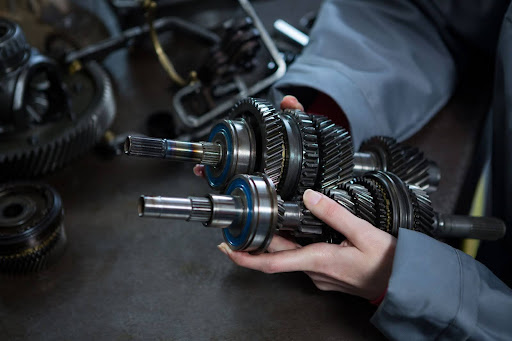


If you’re in the business of engines, gearboxes, compressors, or any rotating equipment, friction is your enemy. It wastes energy, generates heat, wears out components, and pushes your maintenance costs through the roof.
Now imagine having an additive that doesn’t just reduce friction, but actually engineers how two surfaces interact under load, heat, and pressure.
That’s exactly what friction modifiers are built to do. And when you’re dealing with high-performance systems, using the best friction modifier additives can change everything.
At Finozol, we’ve spent years studying what really works under the hood and inside the machine. We supply high-performance friction modifier additives in bulk to lubricant formulators and OEMs across India, the US, Europe, UAE, and South Africa.
So, let’s break this down properly, practically, and honestly. Here's what you really need to know.
To put it simply, friction modifiers are chemicals that alter the frictional behaviour between moving surfaces, particularly when the lubrication regime shifts to boundary or mixed lubrication.
When two surfaces slide against each other, friction can cause energy loss, heat, and wear. Friction modifiers help by forming a thin, protective layer on these surfaces. This layer reduces direct metal-to-metal contact, making movement smoother and more efficient.
In real terms, this happens:
At the molecular level, friction modifiers operate in three main ways:
Depending on their chemistry, they may be polar (attracted to metal), amphiphilic (dual-natured), or even reactive under pressure.
Friction modifiers are not limited to engines. They are critical in:
Even wind turbines, marine engines, and food-grade lubricants benefit from carefully selected modifiers.
Now let’s go deep into the classifications. Choosing the best friction modifier depends a lot on chemistry and end-use conditions.
These are mostly surface-active polar compounds. Common examples include:
Use them in: Passenger cars, two-wheelers, and light industrial oils.
These include molybdenum and boron-based compounds, like:
Use them in: Heavy-duty diesel oils, turbine gearboxes, off-highway machinery.
Polymers work by:
This makes them ideal for energy-efficient oils, especially in fleet oils, long-drain applications, and synthetic blends.
These additives interact with both oil and metal, modifying wetting properties and making lubrication more uniform.
Important tip: These require careful base oil compatibility checks, especially with Group III and IV oils.
Picture this: An engine runs at 3500 RPM. Pistons are firing, cams are rotating, and oil is splashing. But at the micro-contact points, metal is still touching metal, especially during startup, idling, and low-speed zones.
Friction modifiers intervene at that exact contact patch.
They form a microscopic film (sometimes just a few nanometers thick), which:
Think of them as molecular shock absorbers.
Also Read- Guide on Lubricant Additives
Let’s cut to the core.
OEMs now demand oils that meet fuel economy specs like ILSAC GF-6, API SP, and more. Friction modifiers directly lower internal drag.
Less friction means less wear, fewer scuff marks, and slower oxidation. Your oil lasts longer. So do your gears and bearings.
This is especially relevant in Indian winters or high-altitude operations. Friction modifiers reduce startup wear dramatically.
Less friction = less load = lower combustion demand. This helps in reducing both CO2 and particulate matter, critical for Euro VI compliance.
Many EV lubricants now include friction modifiers to reduce gear whine and chatter. This improves NVH characteristics.
Choosing blindly is dangerous. Here's what you really need to look at:
Never forget synergy. Friction modifiers may interact with:
Always run lab-scale tests.
If you export, you’ll need to follow:
We don’t just sell. We formulate with you. We test, tweak, and run compatibility studies before bulk shipment. So your production line doesn't get stuck with unstable blends.
One of our clients in the manufacturing industry was facing excessive energy losses and overheating in their industrial gear-driven systems. Despite using premium base oils, the systems displayed high friction, causing inconsistent performance.
We developed a custom friction modifier blend that targeted their operating temperature and load profile. After testing and validation:
This not only enhanced machinery uptime but also delivered substantial cost savings.
We follow a lab-to-plant strategy.
Our chemists continuously work on:
We use REACH-registered suppliers and test every batch via:
Different regions, different problems:
We provide:
We’re not just another supplier. We’re your formulation partner.
Contact Finozol for customized, high-performance friction modifier additives. We supply globally and support bulk formulations tailored to your needs.
A: Yes, but phosphorus is capped at ~800 ppm for API SP. Finozol offers low-phos ZDDP alternatives if you need below 600 ppm.
A: Not when treat rates follow ASTM D892 volatility limits. Our MoDTC packages stay under 0.4 % ash.
A: Passenger-car oils: 0.15–0.4 wt % (organic). Heavy-duty diesel: 300–800 ppm Mo (inorganic). Always validate in bench and field.
A: Only if its polarity is balanced. We run a solubility ladder test (-30 °C to 150 °C) before recommending.
A: Friction modifiers form a thin film on metal surfaces, reducing direct contact and lowering friction, especially under boundary lubrication. They improve efficiency and protect against wear.
A: They include organic (fatty acids, esters), inorganic (molybdenum, boron), polymeric, and surface-active additives—each suited for different lubrication needs and performance goals.
A: They include organic (fatty acids, esters), inorganic (molybdenum, boron), polymeric, and surface-active additives—each suited for different lubrication needs and performance goals